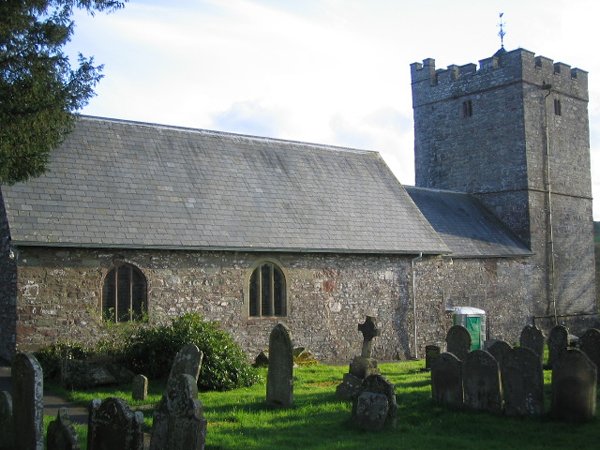For those interested in knowing more about Harris, Geraint Tudur’s Howell Harris: From Conversion to Separation, 1735-1750 (Cardiff: University of Wales Press, 2000) is indispensable. For the wider context, see David Ceri Jones, Boyd Stanley Schlenther, and Eryn M. White, The Elect Methodists: Calvinistic Methodism in England and Wales, 1735-1750 (Cardiff: University of Wales Press, 2013).
This year evangelicals around the world are rightly remembering the tercentenary of the birth of the transatlantic evangelist George Whitefield. However, in most of the commemorations, another anniversary is in risk of being overlooked. Howell Harris, who with Daniel Rowland and William 
Situated on the western side of the British Isles, with England along one border and the Irish Sea on the other, Wales has long been overshadowed by its much larger and more powerful eastern neighbor. Ever since the Victorian compilers of the Encyclopedia Britannica included as their entry for Wales, “See England,” Welsh historians have struggled to make their voices heard outside their own country. Few know that Wales has its own distinct spiritual story.
Harris was born at Trefeca, a small village near Brecon in southeast Wales. While working as a schoolmaster for Griffith Jones, Harris experienced a profound evangelical conversion. That experience, during Easter 1735, was soon eclipsed by what he called his “baptism of fire.” He recorded his experience recorded in minute detail in a diary he began to keep during these months. He continued to write it for the rest of his life: almost 280 diaries survive—a unique, often excruciatingly honest account of Harris’s inner life.
Almost immediately after his conversion, Harris began to visit his neighbors, reading to them from godly books. He was driven, he wrote in his diary, by “some insatiable desires after the salvation of poor sinners; my heart longed for their being convinced of their sins and misery.” Before long he had stopped reading from other people’s books and begun preaching himself, or what he preferred to call “exhorting.” By 1736 he had organized his first group of converts into a small seidau (“societies”), what we would call cell groups, and within a few years he had established a network of more than 50 such groups throughout southeast Wales.
Unknown to Harris, Daniel Rowland was undergoing a similar conversion experience at the same time. An Anglican curate at Llangeitho, a small west Wales village, Rowland was transformed, and he was soon attracting larger than average congregations when he preached in his parish church and the surrounding area. In 1737 Harris and Rowland met for the first time and began pooling their resources, effectively creating the Welsh Methodist revival. At this first meeting they shared their thoughts on their reading of Jonathan Edwards’s recently published account of the 1735 Northampton revival, and Harris excitedly declared, “Surely the time here now is like New England!”
Partnership with Whitefield
Soon, others joined the Welsh revival. Some sympathetic dissenting ministers were drawn in, and with the addition of Howell Davies and William Williams, the latter converted while listening to Harris preach from the top of a gravestone, the four Anglican leaders of the revival were all in place. At the end of 1738, Harris received an unexpected letter from George Whitefield, written as he was traveling back from the American colonies. Harris replied with a letter packed full of details about the revival underway in Wales, and within a couple of months, Whitefield was in Wales witnessing events for himself. Wales, he said, was a “noble soil for Christianity,” and the Welsh seemed “much readier to receive the gospel” than the English. Impressed with Harris, Whitefield jealously wished “to catch some of his fire.” Before long he was preaching regularly in the open air just like his new friend.
So impressed was Whitefield with Harris that he took him back to London, where Harris stayed for the next few months. Whitefield taught him basic Calvinist theology, plying him with Puritan books, while Harris made the acquaintance of the Wesley brothers and some of the leading Moravians, all at that time still held together in fragile unity at Fetter Lane. It was the start of a new pattern; for much of the 1740s Harris divided his time roughly equally between Wales and England. In England he played an enormously influential role, not least acting as a peacemaker as the various factions of the English revival—Wesleyan, Calvinist, and Moravian—began to fragment.
Flaws Surface
Harris was especially skilled as an organizer. As the initial fervor of the revival in Wales began to wane in the early 1740s, Harris devised an organizational structure to manage the 70 societies that had been established in south Wales by that point. It marked the height of Harris’s influence as he formally linked Welsh Methodism to the English Calvinistic Methodist movement, which had come into being following the division between Whitefield and John Wesley over predestination in 1741. Whitefield was appointed moderator of English and Welsh Calvinistic Methodism, and Harris was “General Superintendent or Father of all the work in Wales,” effectively Whitefield’s deputy. It was a well organized and rigorously managed movement, Presbyterian in all but name, and for a time it proved to be a realistic alternative to the Wesleyan Methodist movement. Harris was its chief architect.
Harris took on the heavy burden of the leadership of English Calvinistic Methodism, especially while Whitefield traveled to America between 1744 and 1748. Yet he was not able to prevent its fragmentation, and soon there was also disquiet about Harris himself. By the end of the 1740s he had been traveling incessantly for more than a decade, preaching numerous times a day and shouldering the burden of the English and Welsh revivals. He was close to complete exhaustion and breakdown. And he was sounding more and more like a Moravian, using almost erotic language about the blood and wounds of the crucified Christ, and confusing language about the Trinity. He began referring to the death of God at Calvary.
Relations in Wales were also under increasing strain. Harris and Rowland had always been rivals, and Harris labored under a sense of inferiority because he was not an ordained clergyman. To compensate, Harris claimed primacy in the movement. At times his working relationship with Daniel Rowland reached a breaking point. The final crisis arrived in 1749 when Harris became friendly with Sidney Griffith, the estranged wife of a squire from Caernarvonshire in north Wales. Confiding in his diary that God had revealed to him the imminent death of his wife, clearing the way for his marriage to Griffith, Harris began to invest her with prophetic gifts and insight. With rude songs being sung about him in parts of Wales, Harris began bringing Griffith to Methodist Association meetings, demanding that she be given a place of special prominence. At that point a parting of the ways was inevitable. Whitefield was the first to act, dismissing Harris from the Tabernacle Society in January 1750. Rowland, with the assistance of William Williams, kept the majority of the movement under his control, while Harris with a small group of his most devoted followers retreated to his home at Trefeca.
Awakening Wanes and Waxes
Without Harris the Welsh revival experienced a temporary hiatus. The 1750s were quieter for Harris. Reconciled to his longsuffering wife, Anne, after the death of Griffith in 1752, Harris devoted himself to rebuilding his home at Trefeca and creating a religious community similar to that founded by August Herman Francke at Halle in Germany. Called Y Teulu (“The Family”), it included about 100 of “Harris’s people” at any given time, all living a highly regulated and disciplined life under Harris’s ever-watchful eye. The site included a large house, chapel, orchards, bakery, print shop, and various workshops. Harris’s innovative experiments in agricultural improvement earned him election as an honorary member of the Breconshire Agricultural Society in 1756. During the Seven Years’ War (1756-63) he joined the county militia and traveled throughout much of East Anglia as a recruiting agent for the Protestant struggle against Catholic France.
Harris’s reintegration into the Welsh revival followed the outbreak of another wave of revival in Wales in 1762. This revival, centred on Llangeitho and sparked by the publication of a new hymnbook by William Williams, was more powerful than the revival of 25 years earlier. For a time the old camaraderie between Harris and Rowland returned, but in reality the Welsh Methodist movement had moved on without Harris. It was now under Rowland and Williams’s control; Harris was a shadow of his former self. There were a number of important developments in these years, however, which owed much to his efforts; Wesley, Whitefield, and the Countess of Huntingdon began to revisit Wales once again. Harris worked closely with the countess on the founding of a college to train Calvinistic Methodist preachers at Trefeca in the late 1760s.
Harris’s Legacy
As he never tired of telling people, Harris was the first Methodist leader to experience an evangelical conversion, the first to witness God moving powerfully in revival under his preaching, and the first to preach outdoors. Charismatic and pioneering, Harris was the father of the Welsh Calvinistic Methodist denomination that finally seceded from the Church of England in 1811, long after his death. The structures Harris had put in place in the early 1740s were the foundation of a denomination that in the 19th century became the largest in Wales. There were a number of national revivals, 1859 and 1904–05 being the best known. Indeed, there were few years in 19th-century Wales where some community somewhere did not experience a religious awakening. The Calvinistic Methodist church, shaped in Harris’s image, was the chief beneficiary.
Yet Harris was a deeply flawed leader. Authoritarian, arrogant, and belligerent, he brought the the Welsh revival into widespread disrepute and almost to a standstill in the 1750s due to his relationship with Griffith. For the last 25 years of his life he cut a slightly forlorn figure. Harris represents all of the strengths and weaknesses of the evangelical movement. While his personal failings might have ruined the Welsh revival altogether, the structures Harris put in place ensured that the movement continued without, and perhaps even in spite of him. He has much to teach the contemporary evangelical movement, both captivated and hampered by charismatic and powerful leaders.
20 Things You Can Do Right Now to Prevent Dechurching
 We’re currently experiencing the largest and fastest religious shift in the history of the United States. But there are practical things we can do inside our local churches.
We’re currently experiencing the largest and fastest religious shift in the history of the United States. But there are practical things we can do inside our local churches.
Jim Davis and Michael Graham have commissioned the largest and most comprehensive study of dechurching in America. Informed by their findings, they’ve written a book and developed this corresponding toolkit with resources to help you address the dechurching phenomenon.
We’re delighted to offer you the ‘Rechurching Toolkit’ for FREE today. Click on the link below to get instant access to this resource—worth $100—and be equipped to understand and address the issues behind dechurching.






























